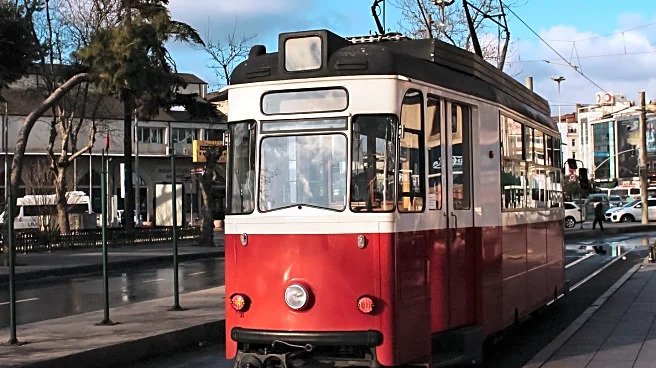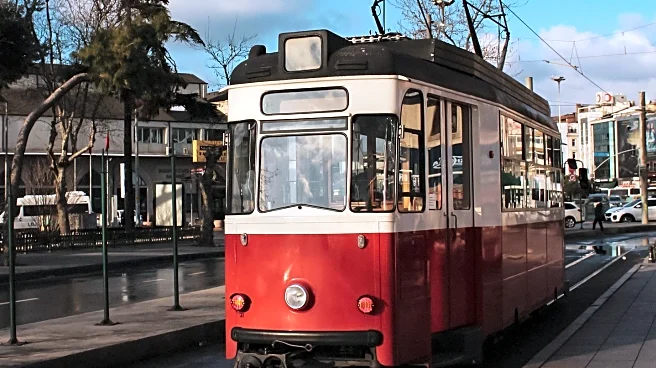What is the story about?
What's Happening?
The Bristol Tramways Company, founded by Sir George White in 1875, initially operated a horse-drawn tram service in Bristol. By 1895, the company transitioned to electric trams, marking the peak of the network's operations in the early 20th century. At its height, the tram network ran 200 vehicles across the city, becoming an integral part of Bristol's transportation infrastructure. However, over time, the tram system was phased out, leaving only memories of its once extensive reach. The decline of the tram network reflects broader shifts in urban transportation preferences and infrastructure development.
Why It's Important?
The historical evolution and eventual decline of Bristol's tram network highlight significant changes in urban transportation systems. The transition from horse-drawn to electric trams represents technological advancements and increased efficiency in public transport. The eventual phasing out of trams in favor of other transportation modes, such as buses and cars, underscores changing urban planning priorities and the impact of modern transportation needs. Understanding this shift provides insights into how cities adapt to technological changes and evolving public demands, influencing current and future transportation policies.
AI Generated Content
Do you find this article useful?











